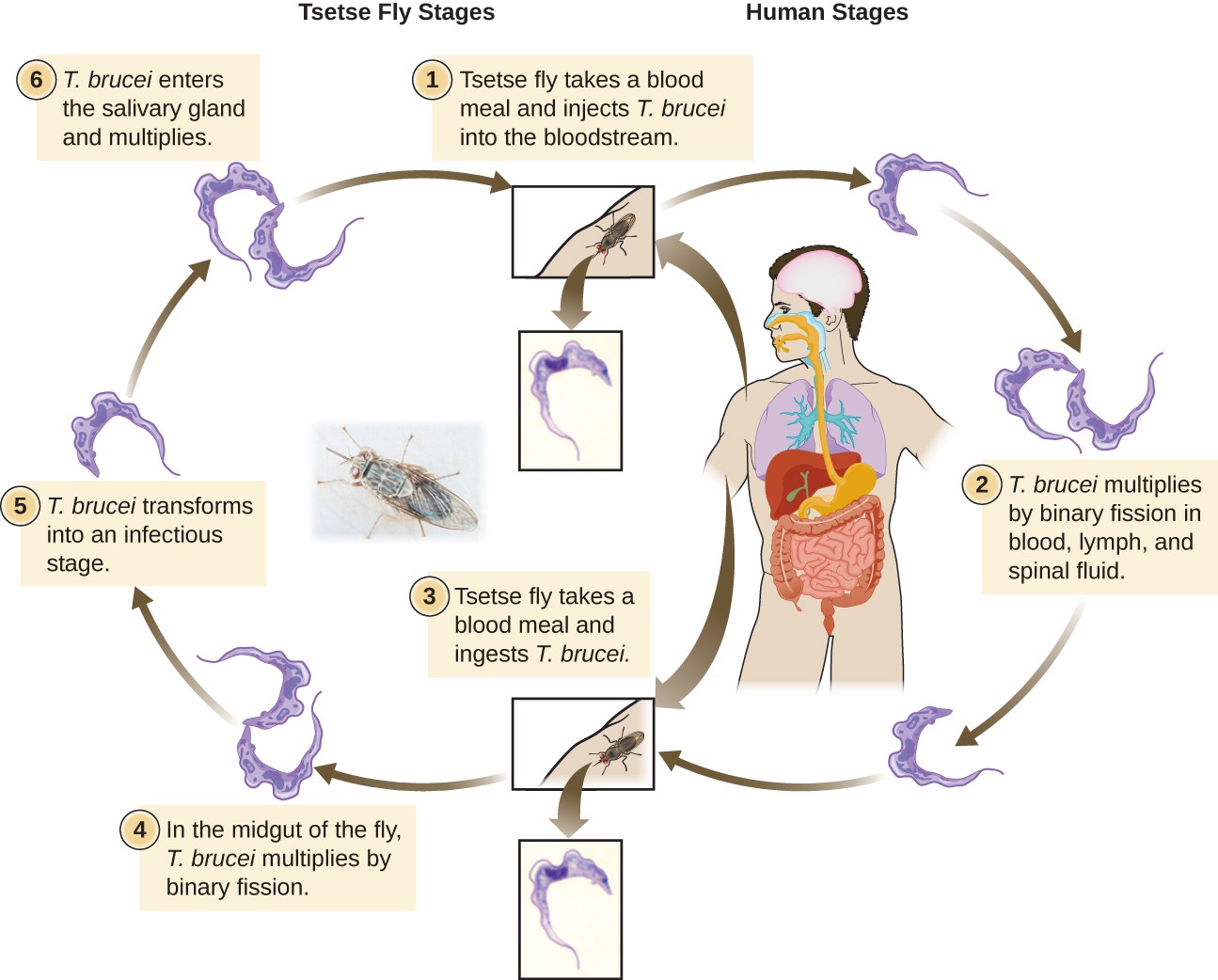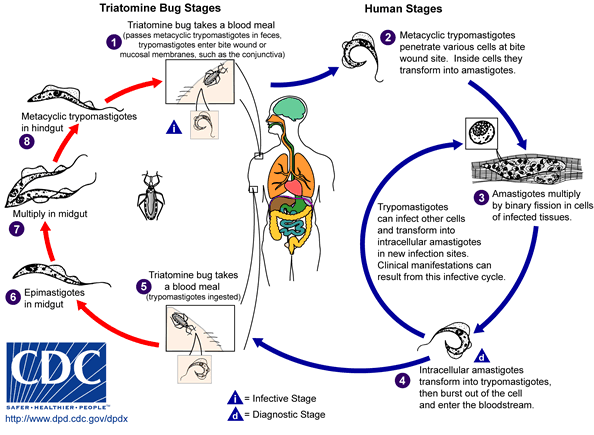Chagas Disease, also known as American Trypanosomiasis, is a potentially life-threatening illness caused by the protozoan parasite Trypanosoma cruzi. This disease primarily affects people in Latin America but has become a global concern due to migration patterns. In this article, we will explore the causes, symptoms, diagnosis, and treatment options for Chagas Disease.

Understanding the Causes of Chagas Disease
The primary cause of Chagas Disease is infection with the parasite Trypanosoma cruzi. The transmission of this parasite occurs through several routes:
- Vector-borne transmission: The most common mode of transmission is through the bite of infected triatomine bugs, also known as “kissing bugs.” These insects are found in rural and suburban areas and typically bite humans on the face or other exposed areas of skin while they sleep.
- Congenital transmission: Infected mothers can pass the parasite to their unborn children during pregnancy or childbirth.
- Blood transfusion: Transmission can occur when infected blood is transfused from a donor to a recipient.
- Organ transplantation: Similar to blood transfusions, organ transplants from infected donors can transmit the disease.
- Foodborne transmission: Consuming food contaminated with feces from infected triatomine bugs can lead to infection.
- Laboratory accidents: Researchers working with the parasite may accidentally become infected.
Understanding these modes of transmission is critical for implementing preventive measures and reducing the spread of the disease.
Symptoms of Chagas Disease
Chagas Disease has two distinct phases: the acute phase and the chronic phase. Each phase presents different symptoms, which can vary in severity among individuals.
Acute Phase
The acute phase occurs shortly after infection and lasts for several weeks or months. During this time, the parasite circulates in the bloodstream. Many people experience mild or no symptoms, making it difficult to detect the disease early. However, some common signs include:
- Fever
- Fatigue
- Body aches
- Headache
- Rash
- Swelling at the site of infection, often around the eye (known as Romaña’s sign)
- Enlarged lymph nodes
In severe cases, particularly in young children, the acute phase can lead to complications such as inflammation of the heart muscle or brain, which may be life-threatening.
Chronic Phase
If left untreated, the disease progresses to the chronic phase, which can last for years or even decades. During this stage, many individuals remain asymptomatic, but approximately 20-30% develop serious complications, including:
- Heart damage, leading to heart failure or arrhythmias
- Digestive issues, such as an enlarged esophagus or colon, causing difficulty swallowing or constipation
- Neurological problems, though less common
These complications can significantly impact quality of life and may require long-term medical management.
Diagnosing Chagas Disease
Diagnosing Chagas Disease can be challenging, especially in its early stages when symptoms are mild or absent. Healthcare providers rely on a combination of clinical evaluation, patient history, and laboratory tests to confirm the presence of the parasite.
Clinical Evaluation
A thorough medical history and physical examination are essential for identifying potential risk factors and symptoms associated with Chagas Disease. Key questions may include:
- Have you lived in or traveled to regions where the disease is endemic?
- Have you been bitten by insects resembling triatomine bugs?
- Do you have a family history of the disease?
Laboratory Tests
Several diagnostic methods are used to detect the parasite or antibodies produced in response to infection:
- Microscopic examination: Blood samples are examined under a microscope to identify the presence of the parasite.
- Serological tests: These tests detect specific antibodies against the parasite in the blood. Common serological tests include enzyme-linked immunosorbent assays and indirect immunofluorescence assays.
- Molecular techniques: Polymerase chain reaction testing can detect the genetic material of the parasite, providing highly sensitive results.
Confirming the diagnosis often requires multiple tests, as no single method is foolproof. Early and accurate diagnosis is crucial for initiating timely treatment.
Treatment Options for Chagas Disease
While there is no cure for Chagas Disease, treatment focuses on managing symptoms, preventing complications, and eradicating the parasite in the acute phase. Two main approaches are employed: antiparasitic therapy and supportive care.
Antiparasitic Therapy
Medications designed to kill the parasite are most effective during the acute phase and in congenital cases. The two drugs commonly used are:
- Benznidazole: This drug is considered the first-line treatment for Chagas Disease. It works by inhibiting the replication of the parasite. Side effects may include rash, nausea, and peripheral neuropathy.
- Nifurtimox: Another effective medication, nifurtimox is often prescribed when benznidazole is not tolerated or available. It also targets the parasite but may cause gastrointestinal disturbances and neurological side effects.
Treatment duration typically ranges from 60 to 90 days, depending on the patient’s age, health status, and disease stage. Early intervention increases the likelihood of successful parasite elimination.
Supportive Care
For individuals in the chronic phase who develop complications, supportive care becomes the cornerstone of treatment. This includes:
- Cardiac management: Patients with heart-related complications may require medications such as beta-blockers, pacemakers, or surgery to address arrhythmias and heart failure.
- Digestive interventions: Surgical procedures may be necessary to correct structural abnormalities in the esophagus or colon.
- Pain relief: Nonsteroidal anti-inflammatory drugs or other analgesics can help alleviate discomfort associated with the disease.
Regular monitoring by healthcare professionals is vital to track disease progression and adjust treatment plans accordingly.
Preventive Measures
Preventing Chagas Disease involves addressing its various modes of transmission. Some effective strategies include:
- Improving housing conditions to reduce exposure to triatomine bugs
- Using insecticides to control bug populations in endemic areas
- Screening blood donations and organ transplants for the parasite
- Educating communities about safe food handling practices
- Providing prenatal screening for pregnant women in high-risk regions
Public health initiatives play a pivotal role in minimizing the burden of Chagas Disease worldwide.
By understanding the causes, recognizing the symptoms, securing an accurate diagnosis, and pursuing appropriate treatment, individuals affected by Chagas Disease can improve their outcomes and overall well-being.





